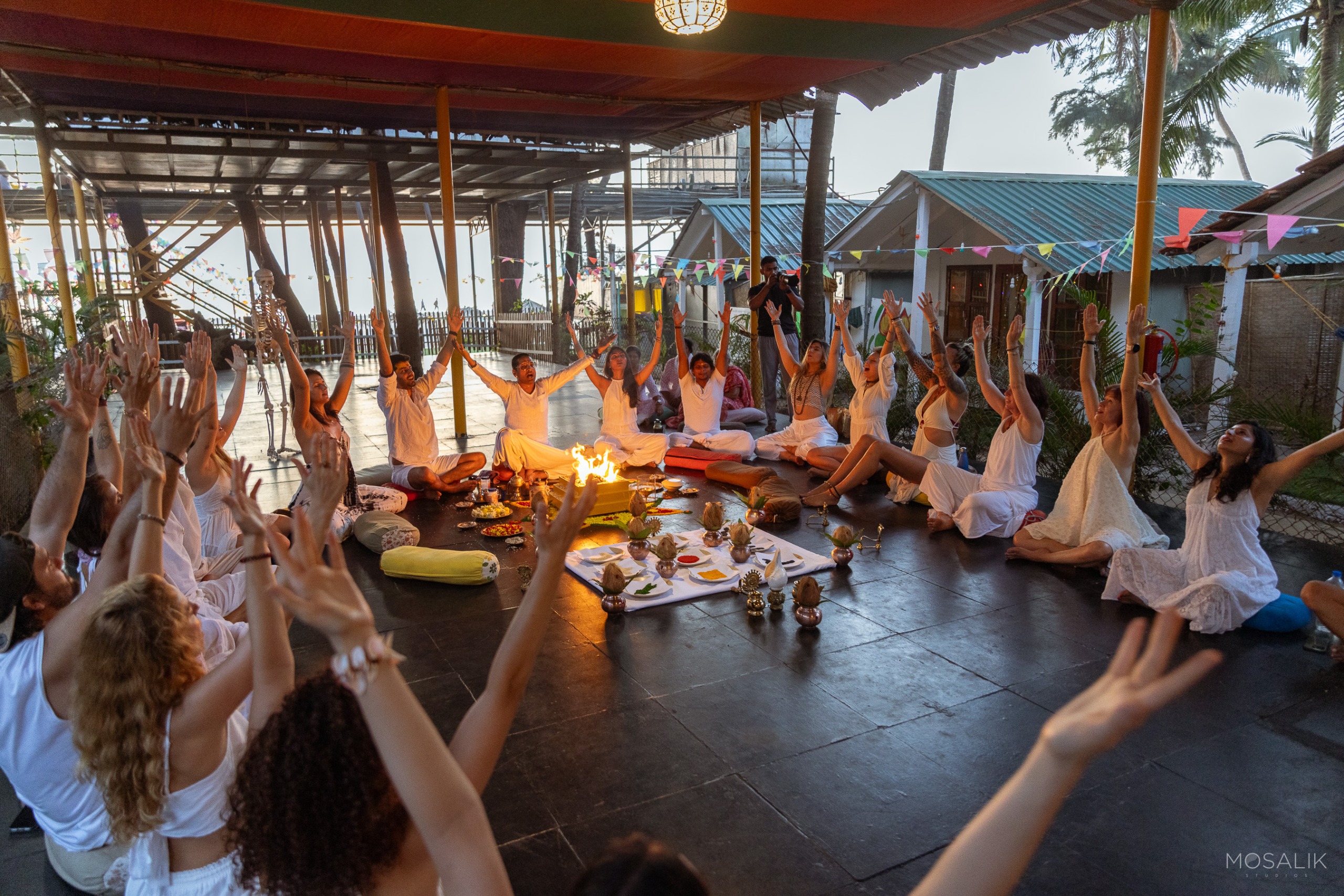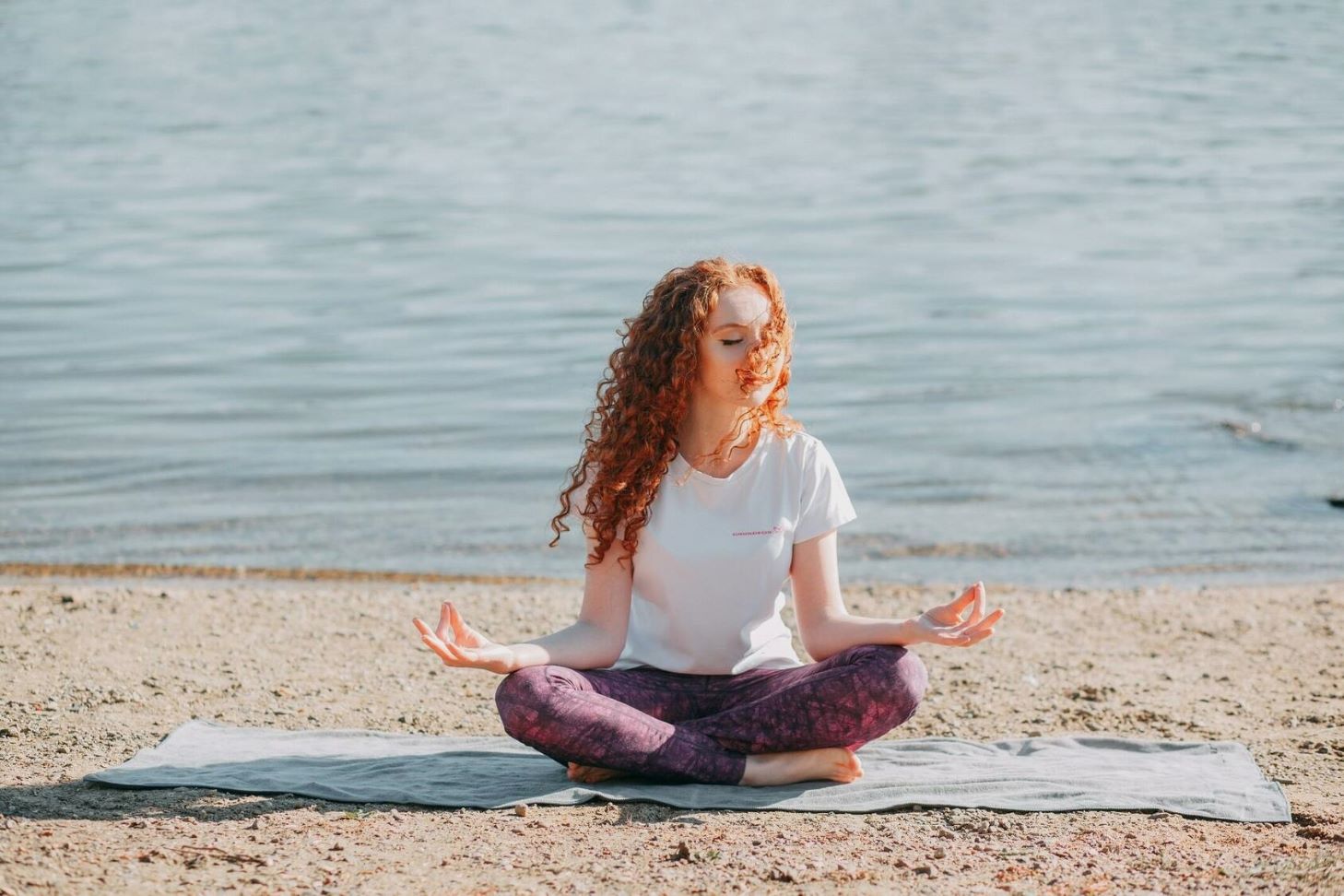Here’s a 6 Step Guide to help you unlock the benefits of Pranayama.
Step 1: Find a Quiet Space Find a quiet, comfortable space where you won’t be disturbed. Sit comfortably, either cross-legged on the floor or in a chair, ensuring your back is straight.
Step 2: Understand the Basics It involves three stages: inhalation (Puraka), retention (Kumbhaka), and exhalation (Rechaka). The ratio of these stages can vary, but a common practice is 1:4:2.
Step 3: Start with Basic Pranayam Begin with Anulom Vilom or alternate nostril breathing. Close your right nostril and inhale through your left. Then close your left nostril and exhale through your right. Repeat this for a few minutes.
Step 4: Practice Regularly Consistency is key in Pranayama. Try to set aside a few minutes each day for practice. Over time, increase the duration as your capacity grows.
Step 5: Explore Advanced Techniques Once comfortable with the basics, explore advanced techniques like Kapalbhati and Bhastrika. Remember, it’s important to learn these under the guidance of a trained practitioner.
Step 6: Observe the Changes Over time, you’ll start to notice a sense of calm and clarity. It can help reduce stress, improve focus, and promote overall well-being.
Remember, Pranayam is a journey, not a destination. Enjoy the process and the peace it brings.
The Art of Breath Control Unveiled via Pranayama
In the rhythmic dance of yoga, where breath and body entwine, the ancient practice of pranayam emerges as a gateway to inner harmony and resilience. Welcome to “Pranayam Mastery: Navigating Life’s Challenges Through the Art of Breath,” an exploration into the transformative power of conscious breathing.
Understanding Pranayama
Pranayam, the ancient yogic practice of breath control, holds the key to unlocking profound physical, mental, and spiritual benefits. Rooted in the Sanskrit words “prana” (life force) and “ayama” (control or extension), pranayama is a pivotal aspect of yoga that extends beyond mere breathing exercises to a deep exploration of life’s vital energy. As an experienced yoga teacher, I’ve witnessed the transformative power of pranayama on practitioners, guiding them toward enhanced well-being, clarity, and inner peace.
The Foundation of Pranayama
Before diving into advanced techniques, establishing a solid foundation is crucial for a safe and effective pranayam practice. Here are the essential steps:
- Create a Comfortable Space: Choose a quiet, well-ventilated space where you can sit comfortably without distractions.
- Find a Stable Seat: Sit in a comfortable seated position with your spine erect. Use a cushion or folded blanket for support if needed.
- Cultivate Diaphragmatic Breathing: Begin with diaphragmatic (abdominal) breathing to engage the full capacity of your lungs, laying the groundwork for more advanced pranayam techniques.
Step 1: Mastering the Basics
The journey into pranayam begins with mastering basic techniques, which are essential for regulating the breath and preparing the body and mind for more complex practices:
- Dirga Pranayama (Three-Part Breath): This technique involves deep, full breaths that fill the abdomen, ribcage, and chest, promoting relaxation and stress relief.
- Ujjayi Pranayama (Victorious Breath): Characterized by a gentle hissing sound at the back of the throat, Ujjayi encourages focus and aids in maintaining a rhythm in asana practice.
Step 2: Exploring Pranayama Techniques
As your practice deepens, exploring various pranayama techniques can significantly enhance your experience and benefits:
- Nadi Shodhana (Alternate Nostril Breathing): This technique balances the left and right hemispheres of the brain, calming the mind and preparing it for meditation.
- Kapalabhati Pranayama (Skull Shining Breath): A cleansing and energizing practice, Kapalabhati revitalizes the body and clears the mind.
- Bhramari Pranayama (Bee Breath): The soothing sound of Bhramari relieves stress and anxiety, promoting a sense of calm and well-being.
Step 3: Integrating Pranayama into Daily Life
Integrating pranayama into your daily routine can transform your practice into a powerful tool for health and self-discovery. Remember, each breath is an opportunity to connect with your inner essence and find balance amidst life’s challenges.
In this journey through pranayama, may you discover the art of breath as a profound companion on your path toward well-being and inner harmony. Pranayama, the essence of breath control, is a fundamental aspect of yoga teacher training. It equips future instructors with the skills to guide others in achieving inner peace and balance.
Health benefits of pranayama
It is a main component of yoga, is the practice of breath regulation. It involves breathing exercises and patterns where you purposely inhale, exhale, and hold your breath in a specific sequence.
Here are some of the health benefits of pranayama according to scientific studies:
Decreases Stress: It can reduce perceived stress levels by calming the nervous system, which improves your stress response.
Improves Sleep Quality: The stress-relieving effects of pranayam may also help you sleep. In clinical studies, a technique known as Bhramari pranayama was shown to slow down breathing and heart rate when practiced for 5 minutes, which may help calm your body for sleep.
Increases Mindfulness: It can promote relaxation and mindfulness. It’s also proven to support multiple aspects of physical health, including lung function, blood pressure, and brain function.
Enhances Lung Capacity: Regular practice of pranayam can enhance lung capacity and improve overall respiratory health.
Improves Mental Clarity: This techniques help to reduce stress, anxiety, and depression, while also improving focus, concentration, and mental clarity.
Remember, it’s always best to learn and practice pranayama under the guidance of a trained professional. Please consult with a healthcare provider before starting any new exercise regimen.
Pranayama, the art of breath control, is a vital part of yoga sessions. It calms the mind, and brings balance and harmony to the body.



